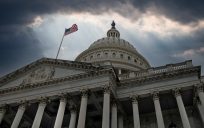On February 12, President Obama issued the Cyber Security Executive Order which focuses on protecting “critical infrastructure” to enable greater sharing of classified intelligence on cyber threats between companies and the government. The Executive Order defines critical infrastructure as “systems and assets, whether physical or virtual, so vital to the United States that the incapacity or destruction of such systems and assets would have a debilitating impact on security, national economic security, national public health or safety, or any combination of those matters.” While public and private organizations have been focused on improving personal passwords to prevent identity theft, recent threats have pushed national cyber security to the forefront. As a result, US Federal cyber security funding is expected to grow over $65 billion over the next five years.
The Executive Order outlines 3 strategic imperatives to strengthen critical infrastructure security and resilience:
- Refine and clarify functional relationships across the Federal Government to advance the national unity of effort to strengthen critical infrastructure security and resilience;
- Enable effective information exchange by identifying baseline data and systems requirements for the Federal Government; and
- Implement an integration and analysis function to inform planning and operations decisions regarding critical infrastructure.
So what does this mean and what are organizations doing to protect our resources from internal and external cyber terrorism? Many federal agencies from Commerce and Energy to DHS are creating new tools and solutions to manage and monitor risk. For example, the Commerce Department’s Patent and Trademark Office and International Trade Administration is diving deeper into how trade secret protection laws work in other countries. In addition, NIST (National Institute of of Standards and Technology), part of the Commerce Department, is leading the effort with industry partners to identify and share best practices to prevent cyber crime. Perhaps most importantly, these efforts involve collaborating across agencies and with other countries.
To help you and your agency learn what others are doing in this space, TTC is sponsoring the Cyber Security and Infrastructure Protection Conference. This conference brings together the senior level U.S. Government and Industry Cyber Security experts from the Critical Infrastructure Sectors. Keynote speakers include Congresswoman Yvette D. Clarke, (D-NY, 11th District), Ms. Jenny Menna, Director, Stakeholder Engagement and Cyber Infrastructure Resilience Division, DHS, and The Honorable Ms. Cheryl Lafleur, Commissioner, Federal Energy Regulatory Commission.
This is your opportunity to hear first hand about innovative new tools built to improve infrastructure resilience against cyber crime and the newest developments in interagency cyber cooperation. The conference is taking place March 19-20 in Washington D.C. You can learn more about the sessions and keynote speakers here.
For more information on cyber security, be sure to visit the Cyber Security Resources page.
Want More GovLoop Content? Sign Up For Email Updates





Leave a Reply
You must be logged in to post a comment.